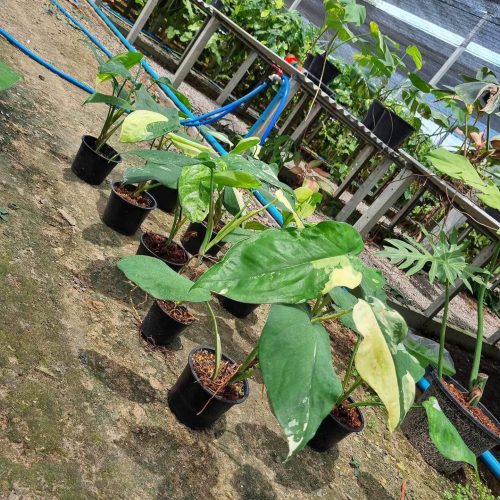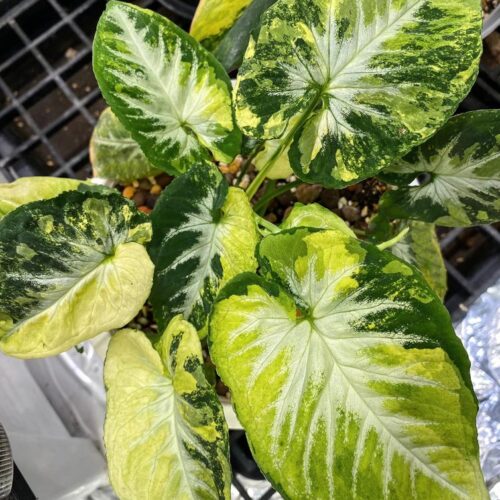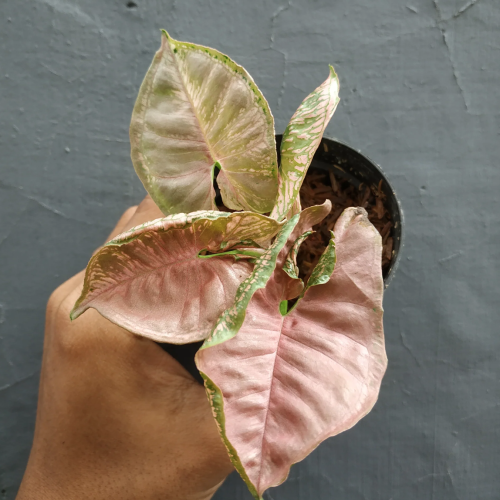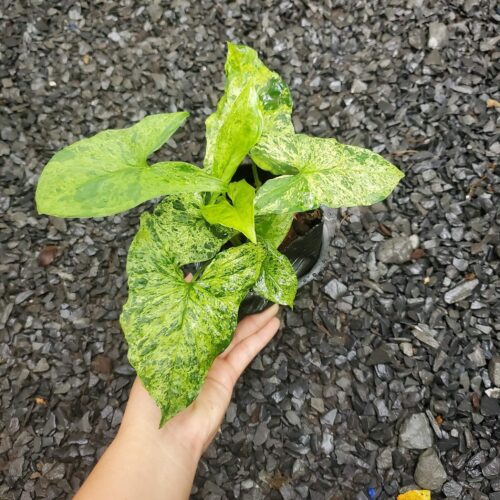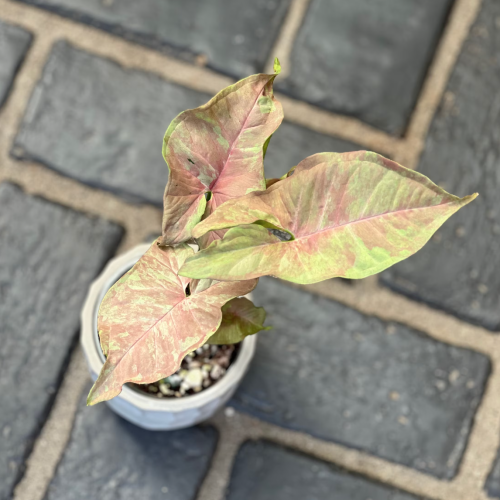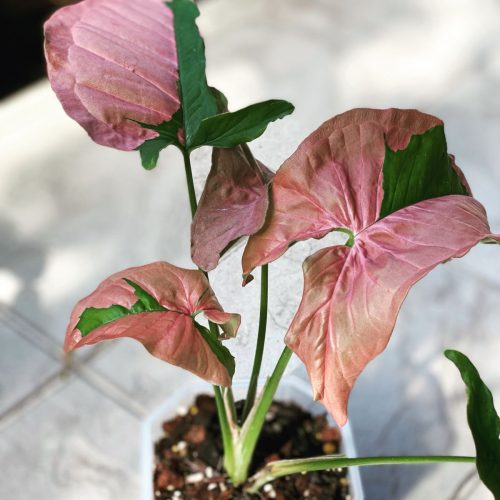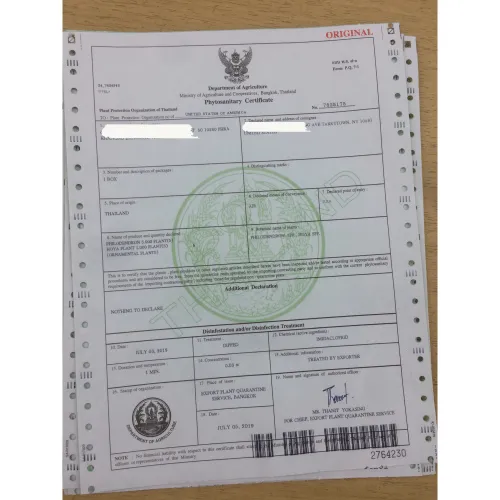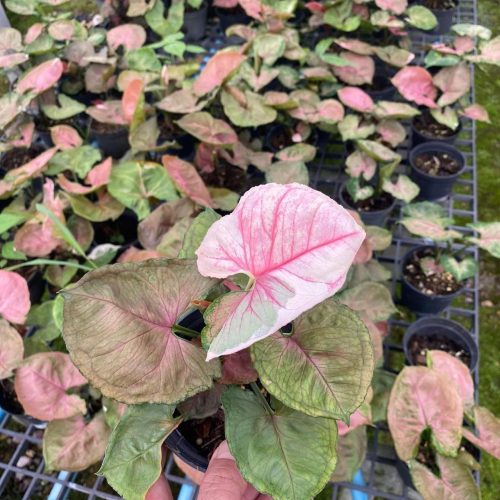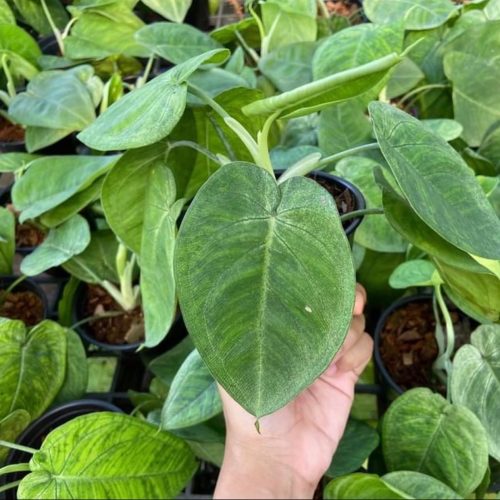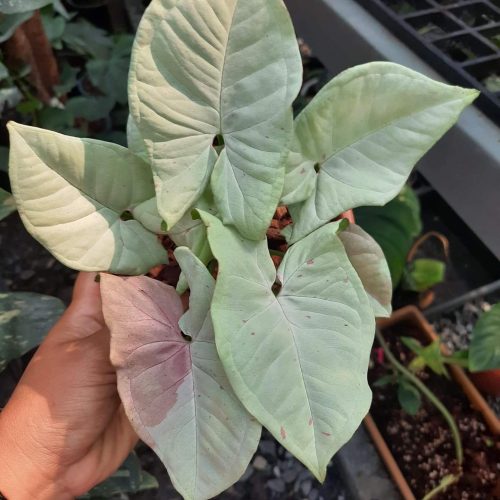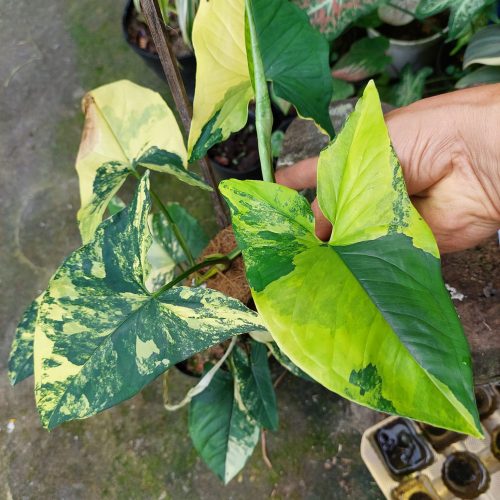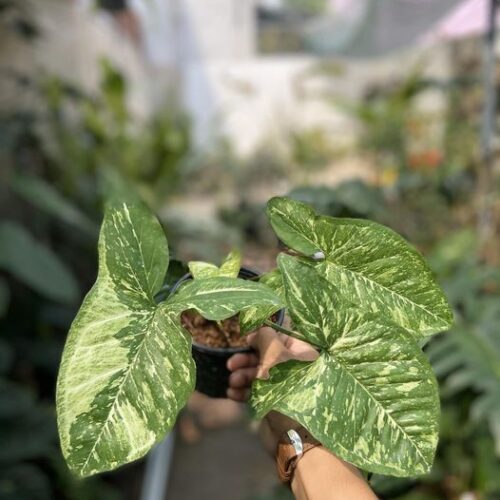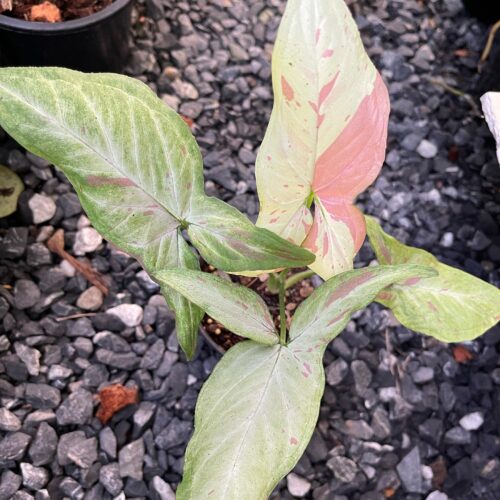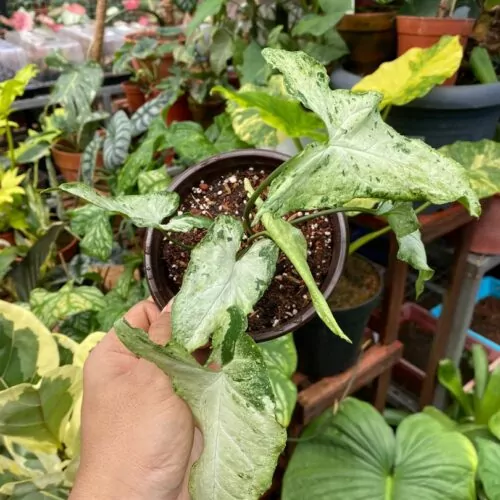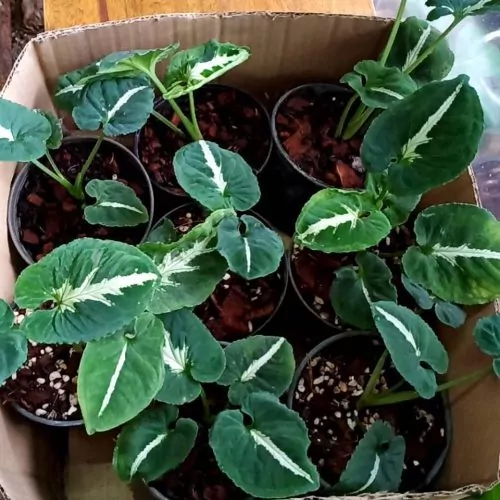Introduction to Syngonium Pink Salmon
Syngonium Pink Salmon, a tropical houseplant known for its lush foliage and easy care, has taken the world of indoor gardening by storm.
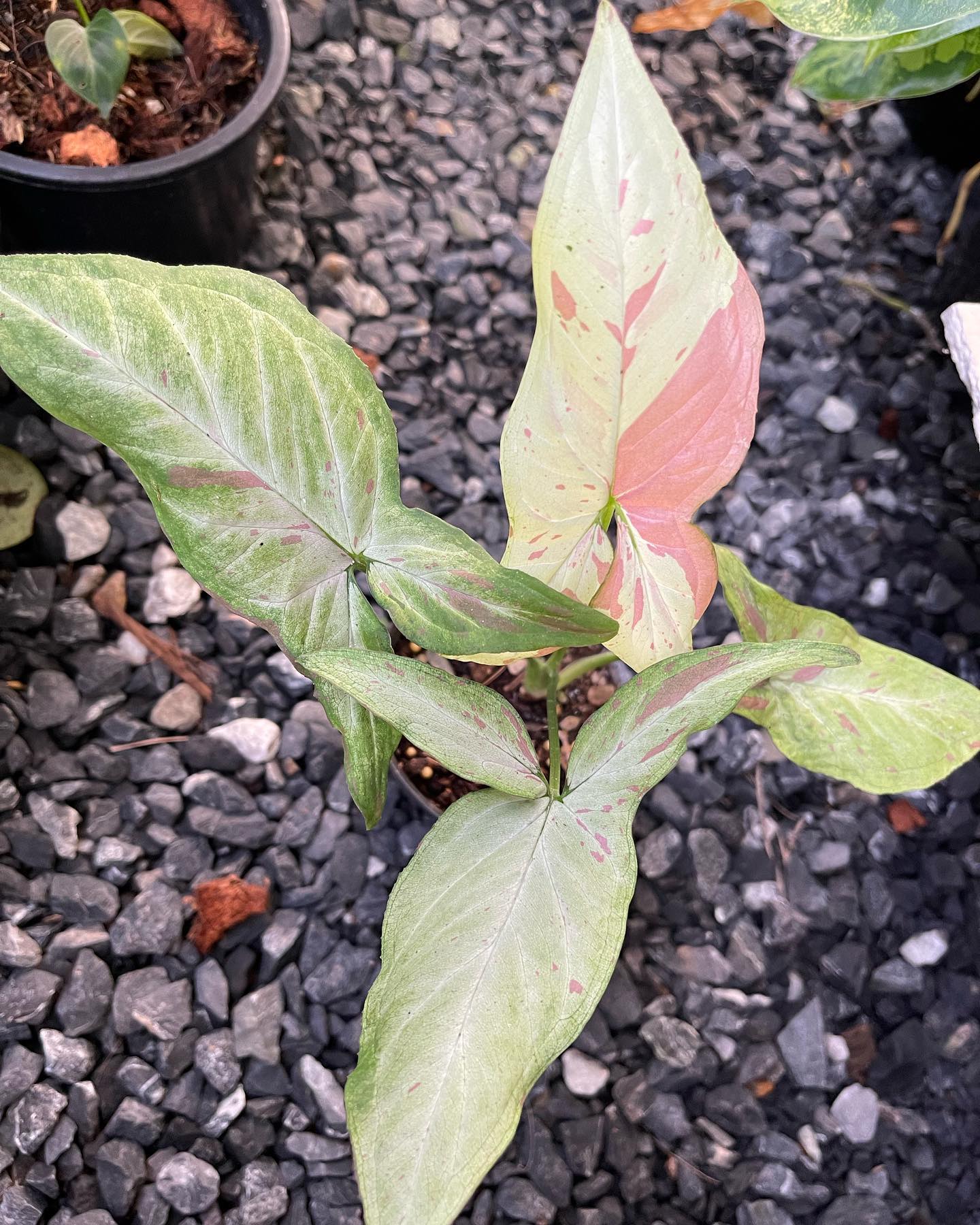
Origin and Description
Origins
Native to tropical rainforests of Central and South America, the Syngonium Pink Salmon has a rich history and brings a touch of the exotic to any setting.
Description
Distinguished by its arrowhead-shaped leaves in a spectrum of pink and green hues, the Syngonium Pink Salmon is truly a sight to behold.
Growing Conditions
Light Requirements
This plant prefers bright, indirect light but can tolerate lower light conditions, making it a versatile addition to your plant collection.
Watering Needs
Water your Syngonium Pink Salmon when the top inch of soil feels dry. Overwatering can lead to root rot, a common problem for houseplants.
Soil Preferences
A well-draining potting mix will keep your plant happy and healthy, as it allows roots to breathe and prevents waterlogging.
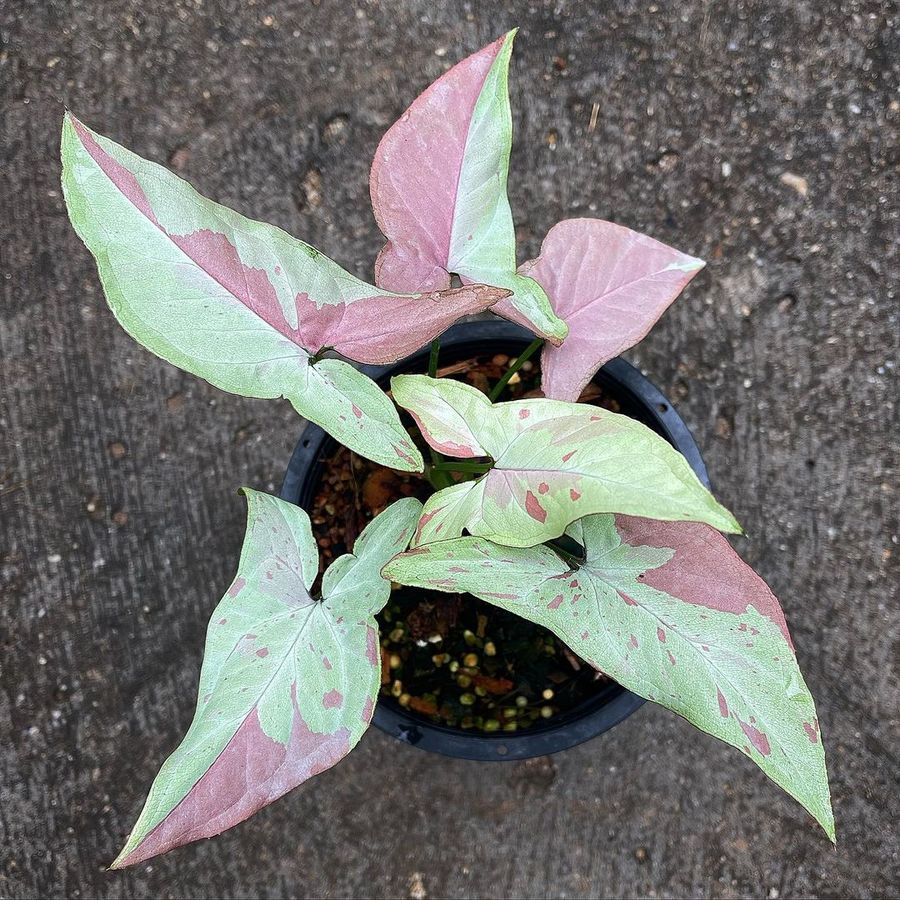
Care and Maintenance
Pruning Tips
Regular pruning helps maintain a compact, desirable shape and promotes denser growth. Always use clean, sharp scissors to avoid transmitting disease.
Dealing with Pests
Keep an eye out for common houseplant pests such as spider mites and aphids. Use a neem oil spray or insecticidal soap to combat infestations.
Repotting Guidelines
Repot every 2-3 years, or when you see roots growing out of the drainage holes. Choose a pot one size larger than the current one to allow for growth.
“To learn more about the ideal growing conditions and how to ensure your Syngonium Pink Salmon thrives, explore our detailed guide on Syngonium Care.”
Propagation Methods
Cuttings Method
Take a cutting with at least one leaf and a couple of nodes, place it in water, and wait for roots to grow before potting.
Division Method
During repotting, gently divide the plant at the roots and pot each section separately.
“Discover the effective methods for propagating your Syngonium Pink Salmon in our article Syngonium Propagation: Easy Steps to Multiply Your Syngonium.”
Benefits of Syngonium Pink Salmon
Air Purification
Syngoniums are known to remove toxins from the air, contributing to a healthier indoor environment.
Aesthetics
Their vibrant coloration adds a pop of color and tropical vibe to any room.

“Discover the elegance of nature with Syngonium Pink Salmon! Click the link now to bring this stunning plant into your home today.”
Where to buy Syngonium Pink Salmon? Benefits from importing plants from Thailand
- Shipping: Door to door shipping, fast and safe with Dragon Courier
- Biodiversity: Thailand is known for its rich biodiversity, including a wide variety of aroid species. This diversity allows importers to access a broad range of unique and exotic aroid plants.
- Quality and Health of Plants: The suitable climate helps the plants grown here stay healthy and of high quality.
- Cost-Effectiveness: Due to favorable growing conditions and efficient production methods, Thai aroid plants can often be more cost-effective compared to those from other countries.
- Access to Hybrid Varieties: Thai growers are often involved in the development of new hybrid aroid varieties, offering unique plants that may not be available from other sources.
Syngonium species are the most sought after by aroid plant lovers
“For a deeper understanding of the health and aesthetic benefits of Syngoniums, including the Pink Salmon variety, see our Syngonium Benefits: 5 Key Benefits of Growing Syngonium.”
Common Problems and Solutions
Yellow Leaves
This could be due to overwatering. Reduce watering frequency and ensure proper drainage.
Wilting
Wilting could be a sign of insufficient light or overly dry air. Move your plant to a brighter location and consider using a humidifier.
Conclusion
The Syngonium Pink Salmon is not only a beautiful addition to any plant collection but also relatively easy to care for, making it a great choice for both novice and experienced plant lovers.
FAQs
- Is Syngonium Pink Salmon pet-safe? No, Syngonium Pink Salmon is toxic if ingested. Keep it out of reach from pets and small children.
- How often should I fertilize my Syngonium Pink Salmon? During the growing season (spring and summer), fertilize your Syngonium Pink Salmon once a month with a balanced houseplant fertilizer. Reduce fertilization in fall and winter as the plant’s growth slows down.
- Can Syngonium Pink Salmon grow outdoors? Yes, Syngonium Pink Salmon can grow outdoors in tropical and subtropical climates. However, it’s primarily an indoor plant in most regions due to its sensitivity to cold temperatures.
- What should I do if my Syngonium Pink Salmon isn’t growing? Check the basics first: light, water, and soil. Your plant might need more light or less water, or it could be time to repot. Also, consider if the temperature and humidity levels are appropriate. If everything seems right but your plant still isn’t growing, it might need fertilizing.
- Can Syngonium Pink Salmon survive in low light? While Syngonium Pink Salmon can tolerate lower light conditions, it prefers bright, indirect light for optimal growth. Too little light may result in slower growth and less vibrant foliage.

